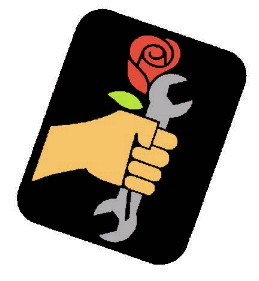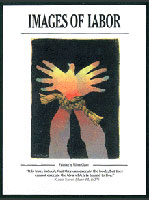Part of the Working Together series to commemorate Labor Day 2006. A group project of Booman Tribune
You dock workers, pipe fitters, pickers, hops, belters
From all walks of life, from each union and local
Come join the Union Grand
Come all you marchers, you chanters, you posters
You tree sitters, sign holders, letter writers, jail goers
For peace and for justice, for the people, for the planet
Come join the Union Grand
Music and art have inspired humanity as far back as our written histories can take us. Whether it’s through the piercing chords of a guitar, or the rhythmic dance of a drum troupe, the human spirit comes alive when we’re able to participate in a moment using our ears to hear and bodies to dance (or march).
Labor unions rely on the empowerment of their members. They exist to demand justice in the workplace and within the realm of policy-making. It’s no wonder that music and the arts have been used extensively as vehicles of motivation.
Joe Hill once said:
Even though those words are a century old, their truth still blazes their way through picket lines and political rallies today. The Labor Heritage Foundation (LHF) was incorporated in 1984 to “strengthen the labor movement through the use of music and the arts.” They have produced music books, put on concerts and feature an online database of labor artists that have carried on the tradition of empowerment through styles of music that range from folk to rock to the rancheras of Mexican farmworkers.
The Labor Heritage Foundation (LHF) was incorporated in 1984 to “strengthen the labor movement through the use of music and the arts.” They have produced music books, put on concerts and feature an online database of labor artists that have carried on the tradition of empowerment through styles of music that range from folk to rock to the rancheras of Mexican farmworkers.
Each year, the Labor Heritage Foundation presents a lifetime achievement called the Joe Hill Award to artists that have enriched and enlivened labor culture. The 2006 recipient was Joe Uehlein, who was one of the founding members of the LHF.
The Labor Heritage Foundation is not the only labor leader to highlight music’s influence on the movement. The AFL-CIO provided a diverse listing of songs to use to celebrate Labor Day 2006. They’re downloadable in RealPlayer format. Lots of great stuff there, and it’s only one piece of the artistic mosaic that makes up labor culture. Art also features prominently in the power of the people.
 The Labor Arts Museum is an online treasure trove of images and history that have inspired workers throughout the decades. The image to the right is from Milton Glaser as part of the Bread and Roses Collection. It was inspired by this quote from Nicola Sacco:
The Labor Arts Museum is an online treasure trove of images and history that have inspired workers throughout the decades. The image to the right is from Milton Glaser as part of the Bread and Roses Collection. It was inspired by this quote from Nicola Sacco:
“It is true, that they can execute the body, but they cannot execute the idea which is bound to live.”
The trial and execution of Nicola Sacco and Bartolomeo Vanzetti made headlines in the 1920s for the discrimination they faced as Italian immigrants under trial for murder. Fifty years later, Massachusetts Governor Michael Dukakis signed a proclamation absolving them of the crimes after overwhelming evidence showing the two men’s innocence. More info on Sacco and Vanzetti’s story here.
For they are women’s children, and we mother them again.
Our lives shall not be sweated from birth until life closes;
Hearts starve as well as bodies; give us bread, but give us roses.
As we go marching, marching, unnumbered women dead
Go crying through our singing their ancient call for bread.
Small art and love and beauty their drudging spirits knew.
Yes, it is bread we fight for, but we fight for roses too.
Bread and Roses was written by James Oppenheim through the inspiration of the banner being held high by female labor activists during the 1912 textile strike in Lawrence, Massachusetts. More info can be found here.
Throughout the decades, the words of Bread and Roses have served as the foundation for many strong initiatives, such as the Bread and Roses Cultural Project sponsored by New York’s Health and Human Service Union, 1199/SEIU; and the Bread and Roses Community Fund, which has “distributed nearly $6 million to groups working for access to health care; economic justice; a clean, safe environment; civil and human rights; peace; and other issues” throughout the Delaware Valley. There is also the nonprofit organization Bread and Roses that has brought music to the people for decades. Each year they sponsor the annual Heritage Festival during Labor Day to empower the cause of justice in the workplace.
The labor movement is only as strong as the will of the people involved in the cause. Whether it’s through music, photography, painting, storytelling or poetry, the human spirit has many ways to express itself to the world. The songs and poems of labor activists throughout the years have successfully created the spark that have ignited flames of activism, making Labor stronger every time the people unite for justice.
Let’s join the band and help the music live vibrantly into the future.




